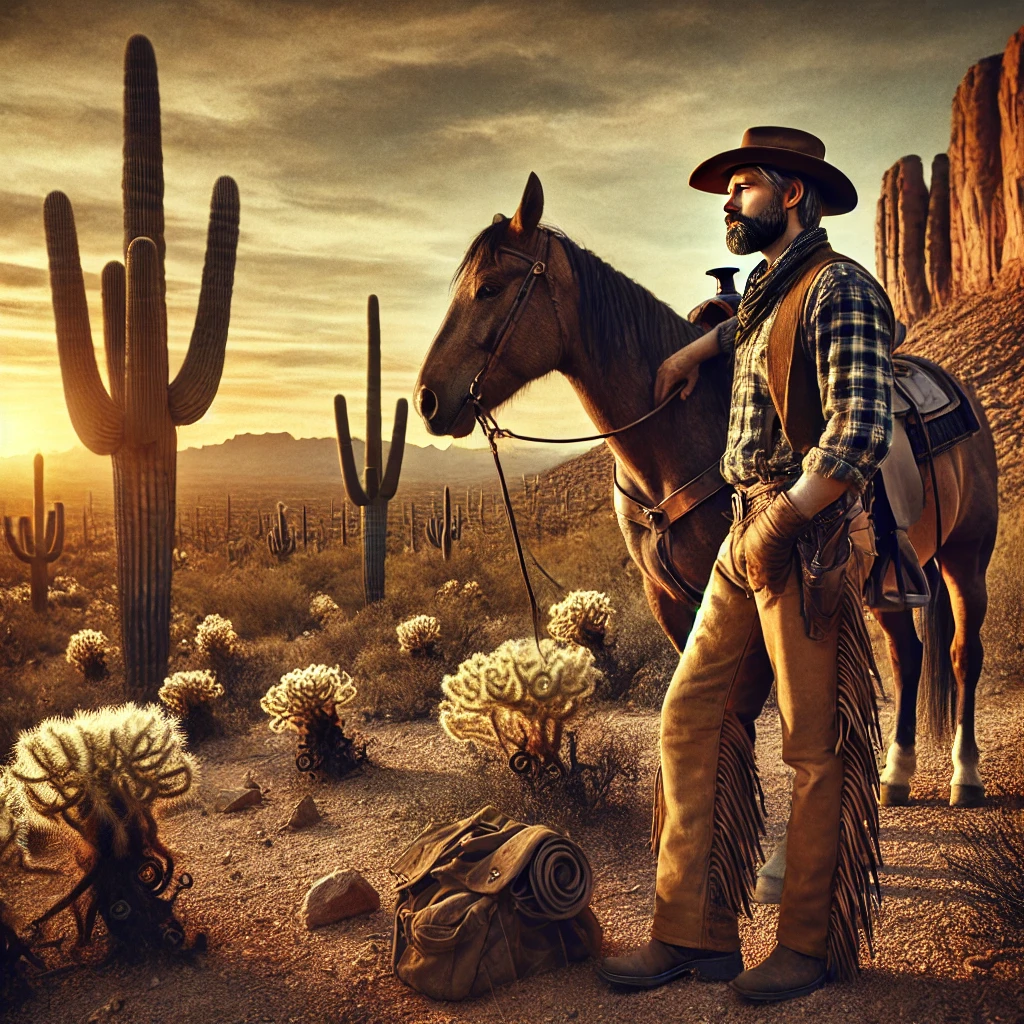
Introduction
I grew up in the desert country of Arizona, where ranching isn’t just a job—it’s a way of life. I wasn’t raised in the saddle from birth, but I came to cowboying honestly, learning the ropes as I got older. Now, at 43, I’ve spent enough time working cattle, fixing fence, and watching the seasons change to know the difference between Hollywood’s version of a cowboy and the real thing.
Hollywood has shaped how people think of cowboys for generations. From the old-school Westerns to today’s TV dramas, the silver screen has created legends—some true, some wildly exaggerated. Over the years, I’ve seen how the cowboy image has changed, both in entertainment and in reality. What people picture when they hear the word “cowboy” isn’t always what they’d see if they spent a day out here in Arizona’s high desert.
The Hollywood Cowboy: A Desert Drifter or a Gunslinging Hero?
Hollywood’s cowboy has always been a mix of fact and fiction. The classic Westerns painted a picture of a lone drifter riding into town, cleaning up trouble with a six-shooter, and then disappearing into the sunset. Films like High Noon (1952) and The Magnificent Seven (1960) cemented the idea of the cowboy as a gunfighter, someone who settled scores with bullets instead of words.
Out here in Arizona, that just ain’t how it works. Sure, there were lawless times in the Old West, especially in places like Tombstone and Prescott, but cowboys weren’t hired guns—they were working men. Their biggest worries weren’t duels or outlaws; they were droughts, busted equipment, and cattle prices. Most real cowboys I know would rather talk things out than start a fight. And unlike in the movies, we don’t spend our days practicing trick shots—we spend them hauling hay, checking fence lines, and riding the herd.
The Changing Image of the Cowboy in Film and TV
As time went on, Hollywood started showing different sides of the cowboy. The tough, silent hero gave way to more complex characters in movies like The Outlaw Josey Wales (1976) and Unforgiven (1992). These films still leaned into the idea of violence, but they also showed the hardship and loneliness that came with cowboy life.
More recently, shows like Yellowstone have put cowboys back in the public eye. Now, instead of the lone gunman, we’ve got the modern cowboy—part businessman, part enforcer, part rancher. I’ll admit, Yellowstone gets some things right. The land disputes, the struggles to keep a ranch running, the generational conflicts—those are real. But the constant fights, the back-alley justice, the borderline criminal activity? That’s Hollywood drama, not cowboy life.
The Real Cowboy: Hard Work, Not Hollywood
If people want to know what real cowboying looks like, they should step onto a working ranch here in Arizona. We deal with triple-digit heat, flash floods, and miles of rough country that’ll chew up a horse’s hooves if you don’t keep an eye on things. Instead of saloons and gunfights, our days are filled with branding, doctoring sick cattle, and repairing fences torn up by monsoon storms.
Unlike the loner image from the movies, real cowboys rely on teamwork. Moving a herd across the desert takes more than one man. We work in crews, trust each other, and know that out here, a mistake can be the difference between life and death. A busted cinch strap or a spooked horse on a rocky trail can put you in a bad way real quick.
Hollywood also loves to show cowboys as rough-talking, hard-drinking gamblers. And sure, we enjoy a good time, but most of us have families to take care of, cattle to tend, and bills to pay. Ranching is a business, and the ones who survive know their way around everything from land management to livestock auctions. It’s not just about riding horses and looking cool—it’s about responsibility, respect, and long hours.
What Hollywood Gets Right (and Wrong)
Not all of Hollywood’s cowboy stories are wrong. Some films, like The Cowboys (1972) with John Wayne, capture the realities of a hard day’s work. They show the dust, the exhaustion, and the pride that comes with doing a job right. And movies like Lonesome Dove (1989) do a solid job of portraying the brotherhood among cowboys—the way we look out for each other, even when times get tough.
But where Hollywood falls short is in its obsession with gunfights, revenge plots, and outlaws. Real cowboys aren’t looking for a fight; they’re looking for a paycheck, some decent weather, and maybe a good horse that won’t try to buck them off every morning. The heart of cowboying isn’t in shootouts or stolen cattle—it’s in the daily grind, the connection to the land, and the respect for the animals that keep the whole operation running.
Conclusion
The cowboy way of life is still alive, but it’s changed. We’ve swapped out some of the old ways for modern tools—ATVs, drones, and even smartphones for tracking cattle. But the values, the hard work, and the love for the land? Those haven’t gone anywhere.
Hollywood will always have its version of the cowboy, and that’s fine. People love a good story. But out here in Arizona, the real cowboys are still putting in the work—without the gunfights, without the drama, just the way it’s always been.
References
Buscombe, E. (2006). The BFI Companion to the Western. University of California Press.
Ebert, R. (1992). Review of Unforgiven. RogerEbert.com. Retrieved from https://www.rogerebert.com
Limerick, P. N. (1987). The Legacy of Conquest: The Unbroken Past of the American West. W. W. Norton & Company.
Turner, F. J. (1893). The Significance of the Frontier in American History. American Historical Association.
Wister, O. (1902). The Virginian: A Horseman of the Plains. Macmillan.

